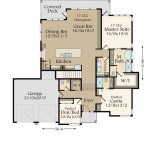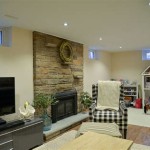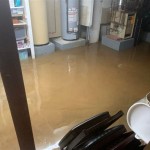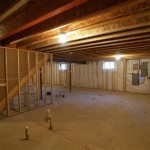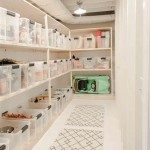Cold Air Return in a Basement Bedroom: Essential for Comfort and Air Quality
Basement bedrooms, while offering valuable living space, often present unique challenges in maintaining comfortable and healthy indoor air quality. One of the most critical elements in addressing these challenges is the proper installation and functioning of a cold air return. A cold air return is not merely a vent; it's an integral component of the HVAC (Heating, Ventilation, and Air Conditioning) system, responsible for drawing cooler air back to the furnace or air conditioner for reconditioning. Failing to adequately address cold air return requirements in a basement bedroom can result in a host of issues, including temperature imbalances, poor ventilation, and increased energy consumption. This document will explore the importance of cold air returns in basement bedrooms, common problems, and best practices for ensuring optimal performance.
Why a Cold Air Return is Crucial in a Basement Bedroom
The primary function of a cold air return is to facilitate air circulation throughout a space. In a forced-air HVAC system, heated or cooled air is delivered to rooms via supply vents. However, without a corresponding return pathway, this conditioned air has nowhere to go, leading to a build-up of pressure and stagnation. This stagnation results in uneven temperatures, with some areas becoming overheated or undercooled. In a basement bedroom, which is already prone to being cooler and damper due to its location below ground level, this issue is exacerbated.
Basements naturally tend to be cooler because they are surrounded by the cooler earth and often lack direct sunlight. Consequently, the air in a basement bedroom may stratify, with the warmest air rising to the ceiling and the coldest air settling near the floor. Without a cold air return to draw this cooler air back to the HVAC system, the furnace or air conditioner will struggle to maintain the desired temperature. The system will work harder, consuming more energy and potentially shortening its lifespan.
Beyond temperature regulation, a cold air return plays a vital role in maintaining indoor air quality. It helps to remove stale air, odors, and pollutants from the room, preventing them from lingering and contributing to respiratory problems or allergies. Proper ventilation is especially important in basements, which are often susceptible to moisture issues that can lead to mold growth. A well-functioning cold air return system helps to mitigate these risks by promoting airflow and reducing humidity levels.
Common Problems with Cold Air Returns in Basement Bedrooms
Several issues can compromise the effectiveness of a cold air return in a basement bedroom. These problems can range from improper sizing and placement to obstructions and inadequate insulation. Identifying and addressing these issues is essential for ensuring optimal performance and a comfortable living environment.
One of the most common problems is an undersized cold air return. If the return is too small, it will not be able to draw enough air from the room, resulting in poor circulation and temperature imbalances. The size of the cold air return should be proportional to the size of the room and the capacity of the HVAC system. A professional HVAC technician can assess the specific needs of the basement bedroom and recommend the appropriate size for the return.
Another frequent issue is improper placement of the cold air return. Ideally, the return should be located in the lowest part of the room, near the floor. This placement allows it to effectively draw the cooler air that tends to accumulate at the bottom of the room. If the return is located too high on the wall, it may not be as effective at removing the cooler air, leading to temperature stratification.
Obstructions can also significantly impair the performance of a cold air return. Furniture, rugs, or other items placed in front of the return can restrict airflow, reducing its effectiveness. It is important to ensure that the return is clear of any obstructions and that air can flow freely into it. Regularly cleaning the return grille to remove dust and debris is also crucial for maintaining optimal airflow.
Inadequate insulation of the ductwork connected to the cold air return can lead to energy loss and reduced efficiency. Uninsulated ductwork can lose heat in the winter and gain heat in the summer, causing the HVAC system to work harder to maintain the desired temperature. Insulating the ductwork can help to minimize these losses and improve the overall efficiency of the system.
Furthermore, in some instances, the cold air return may be improperly connected or sealed, leading to air leaks. These leaks can draw air from unconditioned spaces, such as crawl spaces or utility rooms, which can introduce unwanted odors, pollutants, and moisture into the basement bedroom. Sealing any leaks with duct tape or mastic can help to prevent these issues and improve the overall air quality in the room.
Best Practices for Ensuring Optimal Performance
To ensure that the cold air return in a basement bedroom is functioning optimally, several best practices should be followed. These practices involve proper sizing, placement, maintenance, and insulation.
Proper sizing of the cold air return is paramount. As mentioned earlier, the size of the return should be proportional to the size of the room and the capacity of the HVAC system. A general rule of thumb is that the total area of the cold air return grille should be at least the same as the total area of the supply vents in the room. However, it is always best to consult with a professional HVAC technician to determine the specific needs of the basement bedroom and recommend the appropriate size for the return.
Strategic placement of the cold air return is equally important. The return should be located in the lowest part of the room, near the floor. This placement allows it to effectively draw the cooler air that tends to accumulate at the bottom of the room. Avoid placing the return behind furniture or in areas where it is likely to be obstructed. Consider the layout of the room and the location of the supply vents when determining the optimal placement for the return. Locate the return as far away from the supply vents as possible to ensure the conditioned air circulates throughout the entire room before being drawn back into the system.
Regular maintenance of the cold air return is essential for maintaining optimal performance. This includes regularly cleaning the return grille to remove dust and debris. Dust and debris can accumulate on the grille, restricting airflow and reducing the effectiveness of the return. The grille should be cleaned at least once a month, or more frequently if necessary. Additionally, it is important to inspect the ductwork connected to the return for any signs of damage or leaks. Any leaks should be sealed promptly to prevent air loss and maintain efficiency. Consider replacing the air filter in the furnace or air conditioner regularly, as a dirty filter can restrict airflow and reduce the effectiveness of the entire HVAC system.
Adequate insulation of the ductwork connected to the cold air return is crucial for preventing energy loss and improving efficiency. Uninsulated ductwork can lose heat in the winter and gain heat in the summer, causing the HVAC system to work harder to maintain the desired temperature. Insulating the ductwork can help to minimize these losses and improve the overall efficiency of the system. Use fiberglass or foil-faced duct wrap to insulate the ductwork, ensuring that all seams and joints are properly sealed.
Consider installing a booster fan to improve airflow in the cold air return system, especially if the ductwork is long or has many bends. A booster fan can help to increase the velocity of the air flowing through the ductwork, improving circulation and reducing temperature imbalances. A booster fan can be particularly beneficial in basement bedrooms that are located far from the furnace or air conditioner. Ensure the booster fan is appropriately sized for the ductwork and that it is installed correctly to avoid creating backpressure or other problems.
Finally, consider having a professional HVAC technician inspect the cold air return system annually to ensure that it is functioning properly. A technician can identify any potential problems and recommend solutions before they become major issues. Regular inspections can help to ensure that the cold air return system is operating efficiently and effectively, providing a comfortable and healthy living environment in the basement bedroom.
By adhering to these best practices, homeowners can significantly improve the performance of the cold air return in a basement bedroom, resulting in a more comfortable, energy-efficient, and healthy living space. Proper attention to sizing, placement, maintenance, and insulation is essential for ensuring that the cold air return is functioning optimally and contributing to the overall well-being of the occupants.

Cold Basement Check Your Air Return
Moving Cold Air Return In Basement Diy Home Improvement Forum

Cold Air Return In Basement Inspecting Hvac Systems Internachi Forum

Why Is My Bedroom So Cold Carosella Design Build

Installing A Cold Air Return In Finished Basement Youtube

Learn How To Install Return Air Duct In Your Home The Kings

Making An Hvac Airflow Return In The Basement Redflagdeals Com Forums

Cold Air Return Vents What They Are How Many Do You Need Furnace

Make Your Basement Warmer By Adding A Cold Air Return Vent Youtube

Wall Joist Air Cavity Return
